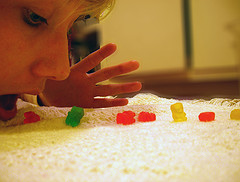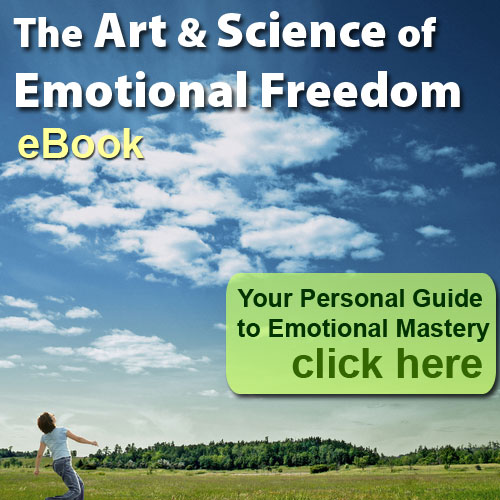4 Key Steps to Breaking Free from Emotional Eating
 According to a recent poll in Self Magazine emotional eating affects the majority of women. Traditionally, we women are the nourishers of the family, we feed them and soothe them, but we sometimes get out of touch with our own emotional needs and that’s when we start looking to our food to be our friend as well as our fuel.
According to a recent poll in Self Magazine emotional eating affects the majority of women. Traditionally, we women are the nourishers of the family, we feed them and soothe them, but we sometimes get out of touch with our own emotional needs and that’s when we start looking to our food to be our friend as well as our fuel.This article explores four ways to become more aware of your emotions and eating habits so that you can discover how to nourish yourself without reaching for the biscuit tin.
1. Know Your Triggers
The more aware you are of the triggers that prompt you to eat when you’re stressed, bored, or upset, the more control you will have over your eating habits. You can build awareness by keeping a brief food journal of what you eat, where you eat, and why you eat. Discovering why is not always so easy at first but as you get into the habit of increasing your awareness, you will soon discover some interesting clues.
Avoid Adverts: Many of us watch TV to “get away from it all” for a while. Unfortunately in that inert, and sometimes unhappy state, we are a prime target for adverts for comfort junk foods. Skipping the adverts is one way to deal with this, but better still is skipping TV. TV time could be replaced by a walk, some gentle breathing exercises, a shower, a chat with a friend, or anything else that’s upbeat and feels nice and supportive to you.
Tackle Cravings: Once we start to become aware of our triggers then we can work with changing them. If there's a particular food that you frequently crave you can download my free quick start guide to Emotional Freedom Techniques here. Any time you feel a craving for that food you can work through the EFT sequence and reduce your desire to eat it. This is something I may write more about later, but in the meantime you can read this excellent article on EFT's success in controlling emotional eating.
Avoid Adverts: Many of us watch TV to “get away from it all” for a while. Unfortunately in that inert, and sometimes unhappy state, we are a prime target for adverts for comfort junk foods. Skipping the adverts is one way to deal with this, but better still is skipping TV. TV time could be replaced by a walk, some gentle breathing exercises, a shower, a chat with a friend, or anything else that’s upbeat and feels nice and supportive to you.
Tackle Cravings: Once we start to become aware of our triggers then we can work with changing them. If there's a particular food that you frequently crave you can download my free quick start guide to Emotional Freedom Techniques here. Any time you feel a craving for that food you can work through the EFT sequence and reduce your desire to eat it. This is something I may write more about later, but in the meantime you can read this excellent article on EFT's success in controlling emotional eating.
2. Know Your Hunger Type
Genuine physical hunger is experienced gradually. Emotional hunger, however, can be felt instantly as an intense hunger, or desire to eat. If you're feeling hungry soon after eating a meal, it's likely that you are experiencing emotional hunger, not physical hunger.As you become increasingly aware of the difference between emotional and physical hunger you can develop alternative responses to eating and try something different to break out of the state that triggered the false hunger signal. You could drink a glass of water, or make yourself a nice warm herbal tea and sip it while you take a break, have a stretch, go for a short walk, or put on some gentle music and spend five minutes doing some meditation or breathing exercises.
I've noticed that I feel instant strong hunger after I've been through a stressful situation and I have friends who've told me that they feel the same. This feeling of hunger has nothing to do with an empty stomach, but it's easily misinterpreted as the need to eat. If we practice self-awareness in eating we can soon tell the difference between the hunger that's telling is it's time to prepare and eat a meal and the hunger that's telling us that we need to look at lowering our stress levels and increasing our sense of personal fulfilment.
3. Eat Mindfully
When you do eat, eat mindfully. Sit down, look at your meal, be grateful for your food and eat it slowly and consciously. Avoid reading, TV and intense conversation while eating wherever possible. If you make your eating an act of meditation you will digest food better both physically and mentally. One factor that increases the desire to eat when we're not truly hungry is a lack of connection with what we ate at our last meal. If you eat slowly and consciously your brain gets time to acknowledge the act. This will help your mind become more balanced about food and stop it sending you false hunger signals because the last meal was eaten "on the go" and neither your stomach or your head got to acknowledge or deal with it properly.3 quick tips for mindful eating:
1. turn off all distractions and sit down
2. eat slowly and chew your food thoroughly, be aware of texture and taste and don't swallow until the food in your mouth is almost liquid
3. don't put anything new in your mouth until you've chewed and swallowed the last mouthful
4. Look for Food-Free Comfort
Start looking for other comforts than food and experiment with feeding yourself in different ways. For example, you could give yourself an oil massage, oil massage is one of the kindest things you can do for yourself, it boosts your immunity, nourishes you skin and nervous system, it's relaxaing and it helps keep your body flexible and supple. You could spend a few minutes a day practising deep breathing to reduce stress and increase your sense of personal wellbeing, or spend time in nature, watching birds, the ocean, or the clouds. Take a relaxing bath or shower and focus on releasing tension from your muscles.
Start noting in your journal things that you like to do that have nothing to do with food and yet they make you feel nourished.
Emotional hunger is less likely to strike when we learn to eat thoughtfully and build a collection of non-food dependent rewards.
Emotional hunger is less likely to strike when we learn to eat thoughtfully and build a collection of non-food dependent rewards.
Photo by Ingorrr
What's Next?
Related articles you might enjoy:
New Treatment for Emotional Eating Provides Answer for Unsuccessful Dieters
Related Resources for Increasing Self-Awareness:
 Art & Science of Emotional Freedom eBook with specific information on reducing cravings
Art & Science of Emotional Freedom eBook with specific information on reducing cravings
 If you enjoyed this article please subscribe to the free Living by Design newsletter, it's filled with tips and ideas on personal growth, productivity, natural health and more. Your email address will be never be shared and you can easily unsubscribe at any time. Newsletters are usually sent out twice a month.
If you enjoyed this article please subscribe to the free Living by Design newsletter, it's filled with tips and ideas on personal growth, productivity, natural health and more. Your email address will be never be shared and you can easily unsubscribe at any time. Newsletters are usually sent out twice a month.
Join the community by subscribing now...
& claim your FREE copy of my LifeCraft eBook - my gift to all newsletter subscribers.

